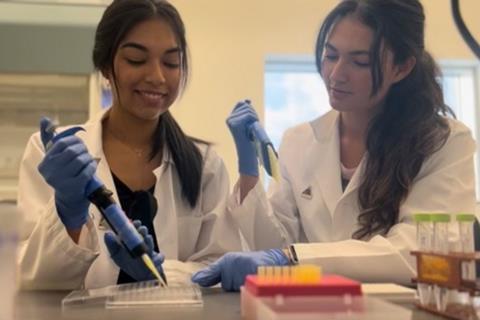One way that bacteria can tolerate antibiotics is through the inoculum effect. The higher the density of bacteria in an infection, the more antibiotic is required to treat the infection.

While the inoculum effect has been observed for nearly all known antibiotics, and has been documented since the 1960s, a common mechanism to explain inoculum effect for multiple antibiotics has not been found.
Scientists recently discovered that interactions between how fast bacteria grow and the amount of energy (or metabolism) bacteria have can explain the inoculum effect for multiple antibiotics and bacteria species. This new research also shows that providing different nutrients to the bacteria that change growth rate and energy levels can eliminate the inoculum effect.
The research paper was just published on Science Advances.
“Our discovery is the first step towards discovering new antibiotics that can be used to successfully treat very challenging high bacterial density infections,” said Robert P Smith, PhD, associate professor and research scientist, Cell Therapy Institute at Nova Southeastern University’s (NSU) Dr. Kiran Patel College of Allopathic Medicine (NSU MD).
“We hope that our work will eventually save lives as we deal with the growing threat of antibiotic resistant bacteria”
This research has the potential to reduce the amount of antibiotics used in the clinic and may pave the way for the discovery of new antibiotics that change growth rate and energy levels in bacteria.
Smith said that NSU was responsible for securing the funding for the research, which was sponsored by NSU and NIH/NIAID, and that all of the experiments took place in NSU’s labs.
The research was led by Gabriela Diaz Tang and Estefania Marin Meneses, both of whom are graduate students at NSU. The work also involved Christopher Blanar, Ph.D., from NSU, Dr. Allison J. Lopatkin from Barnard College of Columbia University and multiple graduate and undergraduate students at NSU.







No comments yet